
- Home
- Travel Packages
- Top Destination
-
Travel Attraction
By Category
Top Attraction

- Travel Agents
- Car Rentals
- Hotels
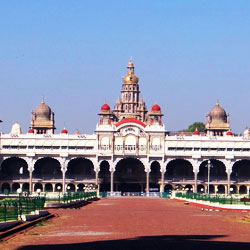
About The Mysore Palace The Mysore Palace, also known as the Amba Vilas Palace, is a magnificent historical palace located in the city of Mysore in the southern state of Karnataka, India. It is one of the most famous tourist attractions in India and is renowned for its grand architecture, exquisite craftsmanship, and rich history. Timings Of Mysore Palace The Mysore Palace is open to visitors every day from 10:00 am to 5:30 pm, except on Sundays and public holidays. Entry Fee The entry fee for Indian nationals is INR 70 for adults and INR 30 for children. For foreign tourists, the entry fee is INR 200 for adults and INR 100 for children. Required Time And Restricted Items It takes approximately 2-3 hours to explore the Mysore Palace thoroughly. Visitors are not allowed to carry bags, cameras, or any other electronic devices inside the palace. These items can be deposited at the cloakroom near the entrance. Architecture Of Mysore Palace The Mysore Palace exhibits a unique blend of Indo-Saracenic, Neo-Classical, and Indo-Islamic architectural styles. The palace is adorned with intricate carvings, beautiful paintings, stained glass windows, and ornate domes. The central arch of the palace is a striking feature that is illuminated by 97,000 light bulbs during special occasions. Best Time To Visit The best time to visit the Mysore Palace is during the annual Dasara Festival, which usually falls in September or October. The palace is beautifully decorated with lights and flowers during this time, and cultural events and processions are organized to celebrate the festival. How To Reach The Mysore Palace is located in the heart of Mysore city and is easily accessible by road. It is approximately 12 kilometers from the Mysore Airport and 3 kilometers from the Mysore Railway Station. Local buses, auto-rickshaws, and taxis are available for transportation to the palace. History Of Mysore Palace The Mysore Palace was originally built in the 14th century and has undergone several renovations over the centuries. The current structure was commissioned by Maharaja Krishnaraja Wadiyar IV and was completed in 1912. The palace served as the residence of the royal family of Mysore until India gained independence in 1947. Inside Mysore Palace Inside the Mysore Palace, visitors can explore the Durbar Hall, Kalyana Mantapa, Ambavilasa, Diwan-e-Aam, and other royal chambers. The interiors are adorned with ornate chandeliers, intricately carved wooden doors, colourful murals, and antique furniture. The palace also houses a museum that displays artifacts, paintings, and memorabilia from the royal era. Traveling Tips It is advisable to visit the Mysore Palace early in the morning or late in the afternoon to avoid crowds. Photography is strictly prohibited inside the palace, so visitors are advised to respect the rules. Comfortable footwear is recommended as the palace grounds are expansive and require a fair amount of walking. Hotels Near Mysore Palace There are several hotels located near the Mysore Palace that offer comfortable accommodation options for tourists. Some of the popular hotels in the vicinity include The Quorum, Radisson Blu Plaza Hotel Mysore, Grand Mercure Mysuru, and Royal Orchid Metropole. Nearby Tourist Spots Of Mysore Palace There are several tourist attractions near the Mysore Palace that visitors can explore, such as the Chamundi Hill, Brindavan Gardens, Mysore Zoo, St. Philomena's Church, and the Jaganmohan Palace. These places offer a glimpse into the rich history and culture of Mysore and are worth a visit.
Explore More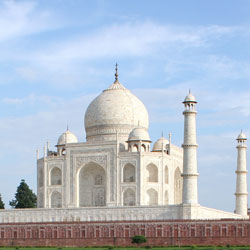
About The Taj Mahal The Taj Mahal is one of the most famous and iconic landmarks in India, located in the city of Agra, Uttar Pradesh. It is a UNESCO World Heritage Site and is considered one of the seven wonders of the world. Built by the Mughal Emperor Shah Jahan in memory of his wife Mumtaz Mahal, the Taj Mahal is a symbol of eternal love and architectural beauty. Timings Of Taj Mahal The Taj Mahal is open to visitors from sunrise to sunset, every day of the week except for Fridays. The monument is closed on Fridays for general viewing but is open for those who want to attend prayers at the mosque located within the premises. Entry Fee The entry fee for the Taj Mahal varies for Indian and foreign tourists. Indian tourists have to pay INR 50, while foreign tourists have to pay INR 1300. Children below the age of 15 can enter for free. Required Time And Restricted Items It is recommended to spend at least 2-3 hours exploring the Taj Mahal to truly appreciate its beauty. Visitors are not allowed to bring food, weapons, tobacco, or alcohol inside the monument. Drone photography is also strictly prohibited. Architecture Of Taj Mahal The Taj Mahal is a masterpiece of Mughal architecture, blending elements from Persian, Turkish, Indian, and Islamic architectural styles. The white marble mausoleum is adorned with intricate carvings, calligraphy, and semi-precious stones, making it a symbol of exquisite craftsmanship. Best Time To Visit The best time to visit the Taj Mahal is during the cooler months of October to March, when the weather is pleasant and comfortable for sightseeing. The early mornings and late evenings offer a magical view of the monument as the sunlight plays on its marble surface. How To Reach The Taj Mahal is easily accessible by road, rail, and air. The nearest airport is in Agra, the Agra Airport, which is well-connected to major cities in India. Agra also has a railway station with regular trains from Delhi, Jaipur, and other cities. History Of Taj Mahal The Taj Mahal was built between 1631 and 1653 by Emperor Shah Jahan in memory of his beloved wife Mumtaz Mahal, who died during childbirth. The construction of the mausoleum took over 20,000 workers and artisans to complete, and it is said to have cost an astronomical sum for that time. Inside Taj Mahal Inside the Taj Mahal, visitors can find the cenotaphs of Shah Jahan and Mumtaz Mahal, surrounded by intricate marble screens and inlaid floral designs. The main chamber houses the false tombs of the emperor and his wife, while the actual graves are located in a chamber below, closed to the public. Traveling Tips It is advisable to wear comfortable clothing and footwear while visiting the Taj Mahal, as you will need to walk around the complex. It is also recommended to carry a hat, sunglasses, and sunscreen to protect yourself from the sun. Hiring a guide can enhance your experience by providing insights into the history and architecture of the monument. Hotels Near Taj Mahal There are several hotels near the Taj Mahal that offer a range of accommodation options for visitors. Some of the popular hotels include the Oberoi Amarvilas, Tajview - IHCL SeleQtions, ITC Mughal, and Trident Agra. Nearby Tourist Spots Of Taj Mahal While visiting the Taj Mahal, tourists can also explore other attractions in Agra such as Agra Fort, Fatehpur Sikri, Mehtab Bagh, and the Tomb of Itimad-ud-Daulah. These sites offer a glimpse into the rich history and culture of the Mughal era.
Explore More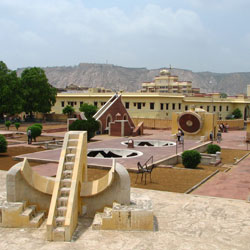
Largest of the five remarkable observatories made by Jai Singh in five different cities, this is the best-preserved one. It shows the Maharaja passion for astronomy. Translated into 'Instruments of Measuring the Harmony of the Heavens', Jantar Mantar was built between 1728 and 1734. It is a grand celebration of astronomical science. It appears to be a collection of sculptures with each sculpture serving a specific purpose of measuring attitudes, azimuths, calculating eclipses or counting of stars. This is the only observatory out of five built in running condition. Situated within the City Palace Complex, it is cut off from the main buildings.
Explore More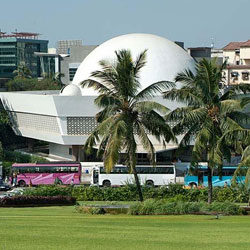
One of India finest architects J.M.Kadri designed this beautiful landmark building which houses Nehru Planetarium. Nehru Centre of Science is also located here. 8 Kms. from the city centre is located a centre telling about the universe. It unfolds the mysteries of the cosmos. They also screen regular film shows on the outer space, which are of particular interest for children. Close by is the Nehru Science centre, which is a science park, and permanent exhibits on intricacies of life. The antique models of Railway engines, aeroplanes, tramcar and steam lorry are exciting to see. Nehru Planetarium is the only astronomical centre in Mumbai, which is also a concert cum movie auditorium. This is the place, recreating the image of the sky as seen from anywhere on the earth at any time. It exhibits collections of lunar and astronomical photographs.
Explore More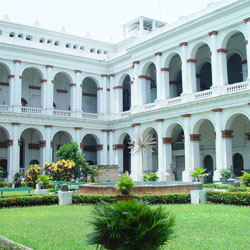
This museum was built in 1875,which was originally founded by Nathaniel Wallich, known as Jadughar, located at the corner of Sudder Street and Chowringhee Road, containing fossil skeletons of prehistoric animals, art collections, rare antiques, mummies, Armour etc. which is probably one of the best in Asia. It certainly the largest and probably the best Museum in India, and one of the best in Asia.
Explore More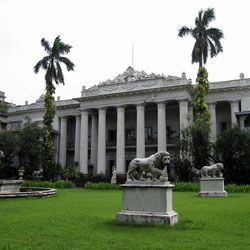
About The Marble Palace The Marble Palace is a stunning mansion that was built in 1835 by Raja Rajendra Mullick, a wealthy Bengali merchant. The palace is renowned for its opulent marble interiors, sprawling gardens, and impressive collection of art and artifacts. Timings Of Marble Palace The Marble Palace is open to visitors from 10:00 am to 4:00 pm on all days of the week except Mondays and Thursdays. Entry Fee There is no entry fee to visit the Marble Palace. However, visitors are required to obtain a visitor's pass from the security gate before entering the premises. Required Time And Restricted Items It is recommended to spend at least 1-2 hours exploring the Marble Palace and its grounds. Visitors are not allowed to carry cameras, mobile phones, or bags inside the palace. These items can be deposited at the security counter at the entrance. Architecture Of Marble Palace The Marble Palace is a fine example of Neoclassical architecture, with its grand columns, intricate marble carvings, and ornate interiors. The palace is adorned with marble statues, European paintings, and exquisite chandeliers, making it a visual treat for art lovers and history enthusiasts. Best Time To Visit The best time to visit the Marble Palace is during the winter months, from October to March, when the weather is pleasant and conducive for exploring the outdoor gardens and grounds. How To Reach The Marble Palace is located in North Kolkata, near Chorbagan. It is easily accessible by public transportation, including buses, trams, and taxis. The nearest metro station is Sovabazar Sutanuti, which is a short walk from the palace. History Of Marble Palace The Marble Palace was built in the 19th century by Raja Rajendra Mullick, a prominent Bengali merchant and art enthusiast. The palace served as a residence for the Mullick family and also as a venue for hosting lavish parties and cultural events. Inside Marble Palace The interiors of the Marble Palace are a visual delight, with marble floors, frescoed ceilings, and a vast collection of art and artifacts from around the world. The palace houses a private zoo, a collection of rare antiques, and a marble staircase that is a marvel of craftsmanship. Traveling Tips Visitors to the Marble Palace are advised to wear comfortable footwear as there is a fair amount of walking involved. It is also recommended to carry a water bottle and sunscreen, especially during the summer months. Hotels Near Marble Palace There are several hotels near the Marble Palace that offer comfortable accommodation options for visitors. Some of the hotels near the Marble Palace include The Oberoi Grand Kolkata, The Lalit Great Eastern Kolkata, and The Park Kolkata. Nearby Tourist Spots Of Marble Palace The Marble Palace is located in close proximity to several other tourist attractions in Kolkata, including the Indian Museum, Victoria Memorial, and St. Paul's Cathedral. Visitors can explore these attractions in combination with a visit to the Marble Palace to make the most of their time in the city.
Explore More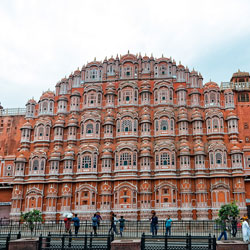
About The Hawa Mahal The Hawa Mahal, also known as the Palace of Winds, is a stunning architectural marvel located in the Pink City of Jaipur, Rajasthan. Built in 1799 by Maharaja Sawai Pratap Singh, this five-story palace is made of red and pink sandstone. The unique facade of the Hawa Mahal has 953 small windows, or jharokhas, which were designed to allow royal ladies to observe everyday life and festivals in the street below without being seen. Timings Of Hawa Mahal The Hawa Mahal is open to visitors every day from 9:00 am to 4:30 pm. Entry Fee The entry fee for Indian nationals is Rs. 50, while for foreign tourists, it is Rs. 200. There is an additional camera fee of Rs. 50 for still photography and Rs. 200 for videography. Required Time And Restricted Items Visitors typically spend about 1-2 hours exploring the Hawa Mahal. Some of the restricted items include weapons, sharp objects, food, and alcohol. Architecture Of Hawa Mahal The Hawa Mahal's unique architecture is a blend of Rajput and Mughal styles. The five-story structure is pyramid-shaped and has a honeycomb-like exterior with small windows, lattice work, and intricate detailing. The palace was designed by Lal Chand Ustad, a renowned architect of his time. Best Time To Visit The best time to visit the Hawa Mahal is during the winter months of October to March when the weather is pleasant and cool. How To Reach The Hawa Mahal is located in the heart of Jaipur and is easily accessible by road. Visitors can hire a taxi, auto-rickshaw, or take a local bus to reach the palace. Jaipur International Airport is the closest airport, located about 10 km away from the Hawa Mahal. History Of Hawa Mahal The Hawa Mahal was built in 1799 by Maharaja Sawai Pratap Singh, the grandson of Maharaja Sawai Jai Singh II. It was designed as an extension of the City Palace to allow royal ladies to watch processions and everyday life on the streets below while maintaining purdah. Inside Hawa Mahal Inside the Hawa Mahal, visitors can explore the various floors and chambers that offer stunning views of the city. The palace also houses a small museum that showcases artifacts, paintings, and sculptures from the royal era. Traveling Tips It is advisable to wear comfortable footwear as there are steep stairs and narrow corridors inside the palace. Visitors should also carry water and sunscreen, especially during the summer months. Hotels Near Hawa Mahal with names Some of the hotels near the Hawa Mahal include: 1. The Raj Palace 2. Alsisar Haveli 3. Umaid Bhawan Heritage House Hotel 4. Pearl Palace Heritage - The Boutique Guesthouse 5. Radisson Jaipur City Center Nearby Tourist Spots Of Hawa Mahal There are several tourist attractions near the Hawa Mahal that visitors can explore, including: 1. City Palace 2. Jantar Mantar 3. Amer Fort 4. Jal Mahal 5. Nahargarh Fort 6. Albert Hall Museum
Explore More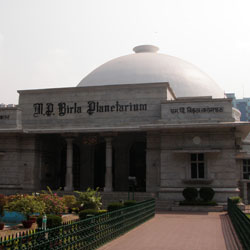
This is the largest planetarium in the World near the Government of India tourist office providing a view of the stars and the solar system. For enthusiasts of Astronomy this is a place not to be missed. One of the largest in Asia, close to the crossing of Theatre Road and Chowringhee Road, the Birla Planetarium is adjacent to the Maidan. The planetarium is a single storeyed, circular structure constructed in pure Indian architectural style. The central dome has a diameter of 27m shaped in imitation of the Buddhist Stupa at Sanchi. The central hall can accommodate 500 persons. Interesting exhibits are the fine collections of paintings, celestial models and busts of famous astronomers that line the corridors. The gigantic planetarium projector accessories comprise of 29000 parts and combine to portray on the inner ceiling of the planetarium, the naked face of space, Stars, planets and heavenly bodies.
Explore More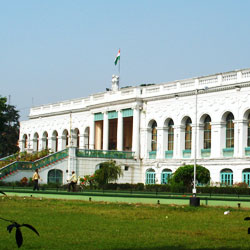
Housed in the former residence of the Lieutenant Governor of Bengal popularly known as Belvedere Estate, The Calcutta public library and Imperial Library amalgamated in 1903 to become National Library, which is supposed to be India's largest library. The erstwhile sprawling residence of the Lieutenant Governor of Bengal, at Belvedere, is a depiction of the Italian Renaissance style. The building that houses the National Library was originally constructed as the Vice regal House around 1700. Meant as a symbol of imperial power, it was built on a grand scale with a high arched gateway, sprawling lawns and ornate halls.
Explore More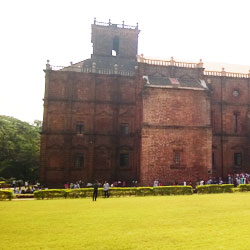
Old Goa about 9 Kms. east of Panaji, was once the capital of the eastern Portuguese Empire and is now a fascinating small village surrounded by huge convents and churches dedicated to the zeal of Christianity, including the Convent and Church of St. Francis of Assisi and the famous Basilica of Bom Jesus. This ancient historical former capital of Goa is a UNESCO world heritage site now and is famed for its opulent buildings and churches reminiscent of the glory days of "Golden Goa". The Portuguese abandoned it officially in 1843 when the capital was moved to Panjim or Panaji. Today, the archeological survey of India and the Archdiocese of Goa maintain most of the remaining buildings. It is a holy site for all Goans because it is the site where the sacred relics of St Francis Xavier or "Goencho Saib" are preserved for posterity.
Explore More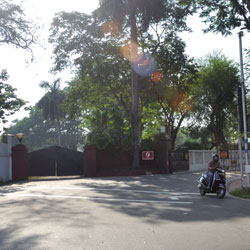
About The Fort William Fort William is a historic fort located in the city of Kolkata, India. The fort is situated on the eastern bank of the Hooghly River and is named after King William III of England. It was built during the early 18th century by the British East India Company to protect their trading post in Bengal. Timings Of Fort William The fort is open to visitors from 10:00 am to 5:30 pm on all days of the week, except on Mondays. Entry Fee The entry fee for visiting Fort William is INR 20 for Indian citizens and INR 250 for foreign nationals. There is an additional charge for photography inside the fort. Required Time And Restricted Items It is recommended to allocate at least 2-3 hours to explore the fort and its surroundings. Visitors are not allowed to carry large bags, weapons, or sharp objects inside the fort premises. Architecture Of Fort William Fort William is an impressive structure built in the shape of an octagon with thick walls and bastions at regular intervals. The architecture reflects a mix of European and Indian styles, with intricate carvings and detailing. Best Time To Visit The best time to visit Fort William is during the winter months from November to February when the weather is pleasant and ideal for exploring the fort and its gardens. How To Reach Fort William is easily accessible by road, rail, and air. The nearest railway station is Howrah Junction, which is just a short distance away. The nearest airport is Netaji Subhas Chandra Bose International Airport, which is about 20 kilometers from the fort. History Of Fort William Fort William was built in 1781 by Robert Clive, the Governor of Bengal, to act as a stronghold for the British East India Company. It played a crucial role in the defense of Kolkata during the colonial era and witnessed several historic events such as the Battle of Plassey. Inside Fort William Inside the fort, visitors can explore the various barracks, dungeons, and cannons that have been preserved over the years. There is also a museum that showcases the history of the fort and its significance in the British colonial period. Traveling Tips It is advisable to wear comfortable footwear and carry sufficient water while visiting Fort William as there is a fair amount of walking involved. It is also recommended to hire a guide to learn more about the history and architecture of the fort. Hotels Near Fort William Some of the hotels near Fort William include The Oberoi Grand, Taj Bengal, and The Lalit Great Eastern Kolkata. These hotels offer luxurious accommodation and modern amenities for travelers visiting the fort. Nearby Tourist Spots Of Fort William There are several tourist spots near Fort William that are worth visiting, such as Victoria Memorial, Eden Gardens, and Howrah Bridge. These attractions offer a glimpse into the rich cultural heritage of Kolkata and are popular among tourists.
Explore More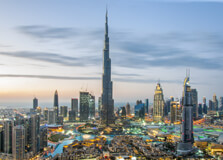
The Burj Khalifa, standing as the tallest building in the world at 828 meters (2,717 feet), is a marvel of modern architecture and engineering. Located in the heart of Dubai, this iconic skyscraper is not just a symbol of Dubai’s skyline but also an epitome of luxury and innovation. The Burj Khalifa is one of the world’s most recognized landmarks, offering spectacular views of the city and beyond. How to Reach Burj Khalifa, Dubai Reaching the Burj Khalifa is easy thanks to its central location in Dubai's Downtown district. There are several ways to get to this monumental structure: By Taxi or Car: One of the most convenient ways to reach Burj Khalifa is by taxi or private car. The building is located in Downtown Dubai, and it is a short drive from many of the city’s main attractions such as the Dubai Mall and Dubai Opera. By Metro: The nearest metro station to the Burj Khalifa is the Burj Khalifa/Dubai Mall Metro Station, located on the Red Line. From here, you can take the mall’s air-conditioned walkway that leads directly to the Burj Khalifa and the Dubai Mall. By Bus: There are several buses that operate in the area, with stops near the Burj Khalifa, making it accessible for those traveling on a budget. Weather at Burj Khalifa, Dubai The weather in Dubai is typically hot and sunny throughout the year, which makes it a year-round destination for visitors. However, the climate varies by season: Summer (June to September): Dubai’s summer months can be extremely hot, with temperatures reaching up to 40°C (104°F) or higher. Humidity levels also increase, making the weather feel even hotter. It’s advisable to visit early in the morning or late in the evening to avoid the extreme heat. Autumn (October to November): During autumn, temperatures are more bearable, ranging from 25°C to 35°C (77°F to 95°F). The weather is generally pleasant, making it an ideal time to visit the Burj Khalifa and explore the city. Winter (December to February): Winter in Dubai is mild and comfortable, with temperatures ranging from 15°C to 25°C (59°F to 77°F). This is considered the peak tourist season, as visitors enjoy the mild weather while exploring outdoor attractions like the Burj Khalifa. Spring (March to May): Spring offers temperatures ranging from 20°C to 30°C (68°F to 86°F), making it another great time to visit the Burj Khalifa and enjoy the city’s attractions. Timing of Burj Khalifa, Dubai The Burj Khalifa is open to the public for visits to its observation decks, as well as to its fine dining restaurants. Here are the details: Observation Deck Hours: The observation decks on the 124th and 148th floors are open daily from 8:30 AM to 11:00 PM. It’s recommended to visit during the early morning or late evening to experience breathtaking views of the city during sunrise or sunset. At the Top Lounge Hours: The At the Top Lounge, located on the 148th floor, offers a VIP experience and is open from 10:00 AM to 10:00 PM daily. Dining Hours: The Atmosphere restaurant, located on the 122nd floor, serves breakfast, lunch, and dinner. Its opening hours vary but typically range from 7:00 AM to 11:00 PM. Why Famous for Burj Khalifa, Dubai? The Burj Khalifa is renowned for being the tallest building in the world, but its fame extends far beyond its height. It represents Dubai’s ambition and ability to push the boundaries of what’s possible in architecture and engineering. The building is a testament to Dubai’s economic boom, symbolizing luxury, modernity, and innovation. Visitors come from around the world to marvel at its height, visit its observation decks, and enjoy the breathtaking views of the city. In addition to its record-breaking height, the Burj Khalifa is famous for its unique design, which was inspired by the desert flower Hymenocallis. Its sleek, modern aesthetic blends with the surrounding cityscape, creating a stunning visual contrast. The building is also home to some of the world’s most luxurious hotels, restaurants, and residences, making it a symbol of Dubai’s luxury lifestyle. Entry and Visit Details about Burj Khalifa, Dubai Visiting the Burj Khalifa requires purchasing tickets for access to its observation decks. Here are the details: Tickets for Observation Deck: Tickets for the Burj Khalifa’s observation decks can be purchased online or at the entrance. Prices vary depending on the time of visit and the level of access. Tickets for the 124th-floor observation deck start from around AED 149, while tickets for the 148th-floor VIP experience are more expensive. VIP Experiences: If you’re looking for an exclusive experience, you can book a VIP package that includes priority access, a personal guide, and access to the At the Top Lounge on the 148th floor. This experience provides a more luxurious way to take in the views and explore the tower. Dining at Atmosphere: To dine at Atmosphere, Dubai’s highest restaurant, reservations are recommended. The restaurant serves gourmet food with panoramic views of the city, offering an unforgettable dining experience. History and Architecture of Burj Khalifa The Burj Khalifa was developed by Emaar Properties and designed by architect Adrian Smith of the firm Skidmore, Owings & Merrill. Construction began in 2004, and the tower was completed in 2010. It took approximately 6 years to build, employing thousands of workers from around the world. The structure is composed of reinforced concrete, steel, and glass, and its exterior features a series of setbacks that create the tower’s distinct stepped silhouette. The design of the Burj Khalifa is inspired by the Islamic architectural tradition, with the central core of the building resembling the shape of a minaret. The building’s unique shape allows it to withstand the harsh desert winds and heat, while also providing spectacular views of the surrounding city and beyond. Inside, the Burj Khalifa features luxurious interiors with marble, glass, and other high-end materials. Things to Do at Burj Khalifa While the Burj Khalifa is primarily known for its observation decks and stunning views, there are plenty of other things to do within and around the building: At the Top: Visit the observation decks on the 124th and 148th floors to enjoy panoramic views of Dubai, including views of the Palm Jumeirah, the desert, and the Arabian Gulf. Sky Lounge: Head to the At the Top Lounge for a VIP experience, complete with beverages and light snacks as you enjoy unrivaled views of the city. Atmosphere Restaurant: Enjoy gourmet dining at Atmosphere, located on the 122nd floor. The restaurant serves international cuisine with a focus on contemporary European dishes. Dubai Fountain Show: After visiting the Burj Khalifa, make sure to check out the Dubai Fountain, located just outside the tower. The fountain offers a spectacular water and light show set to music, making it a perfect end to your visit. Facts and Tips About Burj Khalifa World Records: The Burj Khalifa holds numerous world records, including the tallest building, the highest observation deck, and the tallest freestanding structure. Best Time to Visit: The best time to visit the Burj Khalifa is during the early morning or late evening to avoid crowds and enjoy the most dramatic views, especially during sunrise or sunset. Book Tickets in Advance: To avoid long queues, it is highly recommended to purchase tickets online in advance, especially if you plan to visit during peak tourist seasons. Dress Code: There is no strict dress code for visiting the Burj Khalifa, but smart-casual attire is recommended, particularly if you plan to dine at Atmosphere or visit the VIP areas. Photography: Don’t forget to bring your camera! The views from the observation decks are incredible, and you’ll want to capture the breathtaking scenery of Dubai from above.
Explore More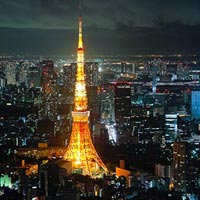
Tokyo Tower slumps in Shiba-koen district of Minato, Tokyo. It claims its name to fame as the second tallest structure in the country. Its structure is said to be inspired from Eiffel Tower. Tokyo Tower in Japan was built in the year 1958. People love to locate the scene of Tokyo from the tower. Functions Tokyo Tower functions as a broadcasting antenna support structure for both television and radio. It is also a popular tourist destination and has many attractions. Attractions for Tourists Tourists can make visit to FootTown, which is a four-story building. It slumps just under the tower. Visitors can have good time here savoring delectable food and enjoying shopping. There are also many museums and galleries located here, which can be explored. Visitors can use the elevators to reach two-story Main Observatory and Special Observatory. MaintenanceAfter every five years, Tokyo Tower is repainted. It takes twelve months to paint the tower. MascotsThe two mascots of the tower are two brothers who are named as Noppon. The elder brother can be spotted wearing blue dungarees, while younger brother can be spotted wearing red dungarees. Their birth date of the mascots is December 23, 1998.
Explore More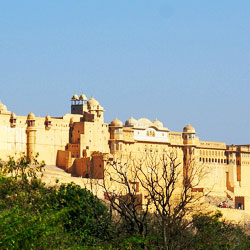
About The Amer Fort The Amer Fort, also known as Amber Fort, is a majestic fort located in Amer, a town situated near Jaipur, Rajasthan, India. This fort is one of the most popular tourist attractions in Jaipur and is recognized for its stunning architecture, rich history, and breathtaking views. The Amer Fort was built in 1592 by Raja Man Singh I and is a blend of Hindu and Mughal architectural styles. Timings Of Amer Fort The Amer Fort is open to visitors from 9:00 am to 5:00 pm every day of the week. Entry Fee The entry fee to Amer Fort is INR 100 for Indian nationals and INR 500 for foreign tourists. There is also a small fee for carrying a camera inside the fort. Required Time And Restricted Items It is recommended to spend at least 2-3 hours exploring the Amer Fort to fully appreciate its beauty and history. Some of the restricted items inside the fort include cigarettes, lighters, and plastic bags. Architecture Of Amer Fort The Amer Fort showcases a captivating blend of Rajput and Mughal architectural styles. The fort is made of red sandstone and marble, with intricate carvings, beautiful courtyards, and stunning palaces like Sheesh Mahal (Hall of Mirrors) and Sukh Niwas (Hall of Pleasure). Best Time To Visit The best time to visit the Amer Fort is during the winter months from October to March when the weather is pleasant and ideal for exploring the fort and enjoying the stunning views from its ramparts. How To Reach The Amer Fort is located approximately 11 kilometers from Jaipur city and can be easily reached by hiring a taxi or auto rickshaw. Visitors can also opt for public transport like buses to reach the fort. History Of Amer Fort The Amer Fort was originally built by Raja Man Singh I and later expanded by his descendants. The fort served as the residence of the Rajput Maharajas and played a crucial role in the defense of the region against various invasions. Inside Amer Fort Inside the Amer Fort, visitors can explore the various palaces, temples, gardens, and courtyards that offer a glimpse into the royal lifestyle of the Rajput rulers. The intricate artwork, mirror work, and paintings inside the fort are truly mesmerizing. Traveling Tips Some tips for visiting the Amer Fort include wearing comfortable footwear as there is a fair amount of walking involved, carrying a water bottle to stay hydrated, and hiring a guide to learn more about the history and significance of the fort. Hotels Near Amer Fort Some hotels near Amer Fort include: 1. Hotel Amer View 2. Trident Jaipur 3. Hotel Amer City 4. Hotel Amer Palace 5. Hotel Amer City Heritage Nearby Tourist Spots Of Amer Fort Some nearby tourist spots of Amer Fort include: 1. Jaigarh Fort 2. Nahargarh Fort 3. Jal Mahal 4. Hawa Mahal 5. Jantar Mantar 6. City Palace Jaipur
Explore More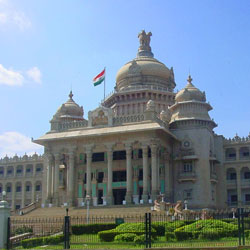
Vidhana Soudha was built in 1956 in Dravidian architecture. It is one of the most imposing buildings not only in Bangalore but also in India. Housing the Legislative Chambers of the state government, this 46-meter high seat of the government is Bangalore's best-known landmark. It houses 22 departments and 300 rooms.
Explore More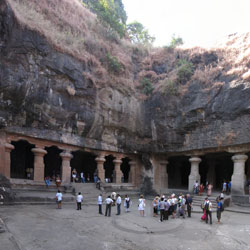
An interesting travel of about an hour by boat from the Gateway of India, passing the Mumbai harbour, and the Naval barges, takes you to Elephanta Caves where there are caves with carvings dedicated to Lord Siva. It is an UNESCO World Heritage site. The Elephanta Island is the site of the magnificent Elephanta caves, containing beautiful carvings, sculptures, and a temple to the Hindu God, Lord Shiva. The island of Elephanta, being a commercial, military and religions centre for centuries has traces of early Buddhist culture.One of the major Tourist Attractions of Maharashtra, the Elephanta Caves are situated near the metropolitan city of Mumbai. The Elephanta island is located 10 Kms away from the Gateway of India. There are various rock cut temples present in these caves, which are as old as 5th century. The Elephanta Island was named by the Portuguese, after the statue of an elephant near the landing area of the island. Construction of The Caves : The rock cut temples in Elephanta Caves are carved out of rock. There are columns, internal spaces and images within these temples. The entire temple is related to a large sculpture. In fact one can walk through the corridors and chambers of this sculptured temple. Created through a process of rock removal, the entire complex is an interesting monument. Some of the rock surfaces here are finely finished whereas some are unfinished bare rock. The Elephanta rock caves are sprawled over a large area of about 60000 square feet. These temple caves consist of a main chamber, courtyards and several subsidiary shrines. There is also a mass of natural rock, above the temple. There are three entrances to the temple. The eastern and the western entrances mark the axis of the temple. There is a 20 pillared hall that lines the axis, and on its western end is a cell in which a Shivalingam enshrined. The Mystical Images : The magnificent image of Sadasiva, a manifestation of Shiva, is carved in relief at the end of the north south axis. The stupendous 20 feet high image of the three headed Shiva, known as Trimurthy is a magnificent one. It is regarded as a masterpiece of Indian art. This huge image represents Panchamukha Shiva, whose only three faces are carved into the wall. It attracts your attention just as you enter the temple through the northern entrance. Along with this image there are grand sculptured images of Kalyanasundara, Gangadhara, Ardhanariswara and Uma Maheswara on the southern wall. Other sculptured images of Nataraja and andhakaasuravadamoorthy are to the west of the northern entrance and the images of Yogiswara and Ravanaanugrahamurthy are to its east.
Explore More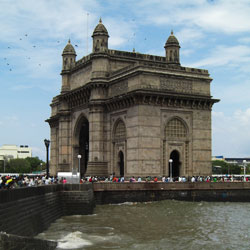
Gateway of India was built with yellow stone in Indo- Sarcenic style to commemorate the visit of King George V and Queen Mary to Bombay and since has become the Icon of Twentieth century Indian history. It is also remembered as the point from where the last British troops left the shores of independent India. To commemorate King George and Queen Mary's visit to India in 1911, the Gateway of India was built at Apollo Bunder, a popular meeting place. The Gateway was built by the British and designed by the architect George Wittet. The first stone was laid by the then Governor of Bombay on March 31st, 1913. This triumphal arch was built at an astonishing cost of 21 lakhs, and was open to the public in 1924. A conventional Arch of Triumph inspires its 26 metre high archway. It is complete with four turrets and intricate latticework carved into the yellow basalt stone. Ironically, when the British Raj ended in 1947, this colonial symbol also became a sort of epitaph: the last of the British ships that set sail for England left from the Gateway. Influences of the 16th century Gujarati style are also evident in its architecture. Situated next to the Taj Mahal Intercontinental Hotel, it is the most enduring landmark of Mumbai.
Explore More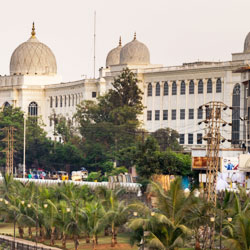
The Salar Jung Museum contains the rich & beautiful collection of a man named Nawab Salar Jung III. The museum is located near the river and houses some of the most ancient and rarest objects. In his times, Nizam of Hyderabad was reckoned amongst the richest men present in the world. There are around 35,000 objects of art, which includes clocks, paintings, jade, swords, miniature paintings, jewellery, statuary and Persian manuscripts. There are various priceless treasures like the turban of Tipu Sultan of Mysore, an ivory chair, the exquisite dagger of Nurjahan the Mughal empress and the dressing table of Marie /Antoinette. The museum displays various items that belong to the prehistoric times and also a pavilion, which comprises of the replicas of Ajanta Frescoes.
Explore More
Times Square is a prime commercial intersection that establishes itself at the juncture of 42nd Street, Seventh Avenue and Broadway intersect. It is the busiest square of New York and has also won several acclaims such as ‘The Great White Way’, ‘The Crossroads of the World’, and ‘The Center of the Universe’. Times Square lures thirty nine million visitors each year. The triangle that lies in the north of Times Square is called the Duffy Square, which was named after Chaplain Francis P. Duffy in year 1937. Along with the memorial of Chaplain Francis P. Duffy, there is also a figurine of George M. Cohan that can be located in Times Square. There is also a TKTS in Times Square where one can buy discounted tickets for various shows. On the eve of New Year, armada of people gather here to welcome and witness the first moments of the New Year. There is a ball hinged on the top of the One Times Square building. This ball is swooped down as part of New Year’s celebrations. The practice started in 1907 and has manifested itself as a tradition in Time Square. Prior to 1907, the New Years’ celebrations at Times Square involved fireworks, which was later stopped by the authorities. The New Year’s celebrations of 1999 also made news worldwide when two million people reached Times Square to whoop and clasp. Times Square building was also an important place for New Yorkians during Second World War. Many huddled here for a one minute silence and due to restrictions imposed on the lowering of the ball, the church bells were pealed instead. In 2008, LED ball was introduced to Times Square and now intersection has become a favourite spot for many to celebrate Halloween and Valentine’s Day every year.
Explore More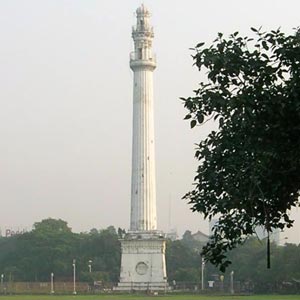
This is a 48 meter high monument, built with a unique blend of Turkish, Egyptian and Syrian architecture and is named after Sir David Ochterlony. In 1969 its name was changed to 'Shaheed Minar'. It was erected in 1828. There a fine view from the top of the column, but permission to ascend must be obtained from police headquarters.
Explore More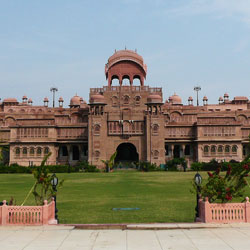
About The Lalgarh Palace The Lalgarh Palace is a magnificent architectural marvel located in Bikaner, Rajasthan. Built in the early 20th century, this stunning palace is a perfect blend of Rajputana, Mughal, and European architectural styles. The palace was commissioned by Maharaja Ganga Singh of Bikaner in memory of his father, Maharaja Lall Singh. Timings Of Lalgarh Palace The Lalgarh Palace is open to visitors every day from 10:00 AM to 5:00 PM. Entry Fee The entry fee for the Lalgarh Palace is INR 50 for Indian tourists and INR 300 for foreign tourists. Required Time And Restricted Items It is recommended to spend at least 1-2 hours exploring the Lalgarh Palace. Visitors are not allowed to carry any food items, drinks, or pets inside the palace premises. Architecture Of Lalgarh Palace The Lalgarh Palace features intricate latticework, filigree work, ornate balconies, and grand courtyards. The red sandstone facade of the palace is adorned with exquisite carvings and sculptures. The interior of the palace is equally impressive with beautifully decorated rooms and halls. Best Time To Visit The best time to visit the Lalgarh Palace is during the winter months from October to March when the weather is pleasant and ideal for sightseeing. How To Reach The Lalgarh Palace is located in Bikaner, Rajasthan, and is easily accessible by road, rail, and air. The nearest airport is the Jodhpur Airport, approximately 250 km away. Bikaner Junction is the nearest railway station, which is well-connected to major cities in India. History Of Lalgarh Palace The Lalgarh Palace was built between 1902 and 1926 by Sir Swinton Jacob, a British architect. The palace was named after Maharaja Lall Singh of Bikaner and served as the residence of the royal family. Today, it has been converted into a heritage hotel and museum. Inside Lalgarh Palace Inside the Lalgarh Palace, visitors can explore the grand Durbar Hall, which is adorned with intricate murals, stained glass windows, and antique furniture. The palace also houses a museum that showcases a collection of royal artifacts, weapons, paintings, and photographs. Traveling Tips It is advisable to wear comfortable clothing and footwear while exploring the Lalgarh Palace. It is also recommended to carry a camera to capture the stunning architecture and interiors of the palace. Visitors are advised to maintain the decorum and respect the heritage property. Hotels Near Lalgarh Palace There are several hotels near the Lalgarh Palace that offer comfortable accommodation options. Some of the popular hotels in the vicinity include Hotel Raj Vilas Palace, Hotel Bhairon Vilas, and Hotel Sagar. Nearby Tourist Spots Of Lalgarh Palace There are several tourist spots near the Lalgarh Palace that are worth visiting. Some of the must-visit attractions include Junagarh Fort, Karni Mata Temple, Gajner Palace, and Rampuria Havelis. These places offer a glimpse into the rich history and culture of Bikaner.
Explore More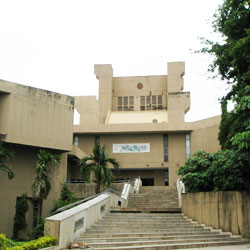
Located in Worli the Nehru Science Museum with sound light gallery has an attractive childrens section. It is the only place, which recreates the image of sky as seen from anywhere on earth at any time. It also has a collection of warplanes, which served the Indian air force. Nehru planetarium was commissioned in 1977 and designed by one of India's finest architects I.M.Kadri. Nehru Centre, a trust headed by the Chief Minister of Maharashtra State, runs it. An astronomical exhibition, comprising of 40 exhibits (transparencies and working model) explain the cosmos. In the auditorium, a breathtaking 'Sky Show' captures the very essence of the Milky Way or Akashganga. Two hundred projectors are simultaneously trained onto a hemispherical ceiling made of aluminum. The effect is realistic and it is not surprising that the planetarium has attracted more than 3 million visitors.
Explore More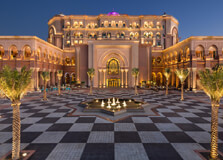
The Emirates Palace is a luxurious hotel located in Abu Dhabi, United Arab Emirates. It is known for its opulent architecture, lavish interiors, and world-class amenities that cater to the needs of discerning travelers from all over the globe. This iconic landmark blends traditional Arabian hospitality with modern luxury, offering guests a truly unforgettable experience. Timings Of Emirates Palace The Emirates Palace is open to visitors from 10:00 AM to 10:00 PM daily. Guests can explore the grandeur of the hotel and its facilities during these hours. Entry Fee There is no entry fee to enter the Emirates Palace. Visitors are welcome to explore the public areas of the hotel, take photos, and soak in the luxurious ambiance without any additional charges. Required Time And Restricted Items It is recommended to allocate at least 2-3 hours to fully experience the Emirates Palace. Guests are advised not to bring food or beverages into the premises, as well as any prohibited items such as weapons or illegal substances. Architecture Of Emirates Palace The architecture of the Emirates Palace is a blend of Arabian design elements and modern luxury. The exterior of the hotel features domes, arches, and intricate carvings that reflect traditional Arabic craftsmanship, while the interiors are adorned with gold leaf, marble, and crystal chandeliers, creating a palatial atmosphere. Best Time To Visit The best time to visit the Emirates Palace is during the cooler months of November to March when the weather is more pleasant for outdoor activities and sightseeing. This time also coincides with various events and festivals in Abu Dhabi, adding to the overall experience. How To Reach The Emirates Palace is located on the West Corniche Road in Abu Dhabi, easily accessible by car, taxi, or public transportation. Visitors can also opt for guided tours or shuttle services provided by the hotel for added convenience. History Of Emirates Palace The Emirates Palace was officially opened in 2005 as a symbol of luxury and hospitality in the UAE. It was constructed by the government of Abu Dhabi as a cultural landmark and a premier destination for international visitors seeking unparalleled comfort and service. Inside Emirates Palace Inside the Emirates Palace, guests can admire the grand lobby with its marble floors, intricate mosaics, and grand staircase leading to the lavish suites and rooms. The hotel also boasts a spa, swimming pools, restaurants, and a shopping arcade for a complete luxury experience. Traveling Tips When visiting the Emirates Palace, it is advisable to dress modestly and respect local customs. Guests should also book tours or activities in advance to avoid disappointment and make use of the hotel's concierge services for personalized recommendations and assistance. Hotels Near Emirates Palace Several hotels near the Emirates Palace offer luxurious accommodations and amenities for travelers. Some of the notable options include The St. Regis Abu Dhabi, Rosewood Abu Dhabi, and Fairmont Bab Al Bahr. Nearby Tourist Spots Of Emirates Palace Visitors to the Emirates Palace can explore nearby tourist attractions such as the Sheikh Zayed Grand Mosque, Corniche Beach, Qasr Al Hosn, and the Louvre Abu Dhabi Museum. These landmarks showcase the rich culture and heritage of the UAE, making for a memorable travel experience.
Explore More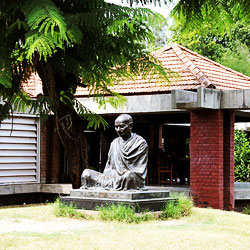
The Gandhi Ashram situated alongside the Sabarmati River, was the nerve center for the Indian Freedom movement. The beautiful ashram complex with it's shady trees offers a refuge from the loud streets of the city. There is a museum inside the Ashram complex. During the lifetime of Mahatma Gandhi it was known as Satyagraha Ashram.
Explore More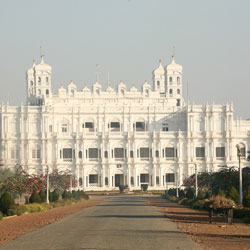
About The Jai Vilas Palace The Jai Vilas Palace is a grand and majestic palace located in Gwalior, Madhya Pradesh, India. Built in 1874 by Maharaja Jayaji Rao Scindia of Gwalior, this palace is known for its blend of European and Indian architectural styles. The palace is spread across an area of 12,40,771 square feet and is one of the largest palaces in India. Timings Of Jai Vilas Palace The Jai Vilas Palace is open to visitors from 10:00 AM to 4:30 PM on all days of the week except Mondays and public holidays. Entry Fee The entry fee for Jai Vilas Palace is Rs. 100 for Indian nationals and Rs. 600 for foreign nationals. There is an additional fee for photography and videography inside the palace. Required Time And Restricted Items It takes around 2-3 hours to explore the Jai Vilas Palace thoroughly. Visitors are not allowed to carry any food items, cameras, or electronic devices inside the palace. Architecture Of Jai Vilas Palace The Jai Vilas Palace is a stunning example of European architecture with a touch of Indian design elements. The palace features intricately designed interiors, marble flooring, ornate chandeliers, and a beautiful Durbar Hall that can accommodate up to 500 guests. The palace also houses a silver train, which is one of the major attractions. Best Time To Visit The best time to visit Jai Vilas Palace is during the winter months from October to March when the weather is pleasant and ideal for exploring the palace. How To Reach The Jai Vilas Palace is located in the heart of Gwalior city and is easily accessible by road. The nearest railway station is Gwalior Junction, which is well-connected to major cities in India. The nearest airport is Gwalior Airport, which is around 15 km away from the palace. History Of Jai Vilas Palace The Jai Vilas Palace was commissioned by Maharaja Jayaji Rao Scindia in 1874 and was designed by Sir Michael Filose, a British architect. The palace served as the residence of the Scindia royal family and has now been converted into a museum showcasing the rich heritage and culture of Gwalior. Inside Jai Vilas Palace Inside the Jai Vilas Palace, visitors can explore the various rooms and galleries that display the royal artifacts, paintings, furniture, and weapons of the Scindia dynasty. The Durbar Hall is the highlight of the palace with its opulent decor and grandeur. Traveling Tips It is advisable to wear comfortable footwear as the palace grounds are expansive and require a fair amount of walking. Visitors are also recommended to hire a guide to get detailed insights into the history and significance of the palace. Hotels Near Jai Vilas Palace There are several hotels near Jai Vilas Palace where visitors can stay during their trip. Some of the popular hotels include: 1. Taj Usha Kiran Palace 2. Hotel Grace 3. Hotel Adityaz 4. Hotel Gwalior Regency 5. The Central Park Hotel Nearby Tourist Spots Of Jai Vilas Palace There are several tourist spots near Jai Vilas Palace that visitors can explore: 1. Gwalior Fort 2. Sun Temple 3. Sas Bahu Temple 4. Tansen's Tomb 5. Gujari Mahal Archaeological Museum
Explore More
About The Jaigarh Fort Jaigarh Fort is a magnificent fort located in Jaipur, Rajasthan. It is situated on the Aravalli Hills, overlooking the Amer Fort. Built by Maharaja Sawai Jai Singh II in the early 18th century, the fort is known for its impressive architecture and historical significance. Timings Of Jaigarh Fort The Jaigarh Fort is open to visitors from 9:00 am to 4:30 pm every day of the week. Entry Fee The entry fee for Jaigarh Fort is INR 35 for Indian tourists and INR 85 for foreign tourists. Required Time And Restricted Items It is recommended to spend at least 2-3 hours exploring the fort. Visitors are not allowed to carry weapons, alcohol, or any illegal substances inside the fort. Architecture Of Jaigarh Fort The architecture of Jaigarh Fort is a fine example of Rajput military style. The fort is well-preserved and features massive walls, watchtowers, and bastions. The fort also houses a museum displaying weapons, armory, and artifacts from the past. Best Time To Visit The best time to visit Jaigarh Fort is during the winter months from October to March when the weather is pleasant and ideal for exploring the fort. How To Reach Jaigarh Fort is easily accessible by road from Jaipur city. Visitors can hire a taxi or take a bus to reach the fort. The fort is located around 15 km from Jaipur city center. History Of Jaigarh Fort Jaigarh Fort was built by Maharaja Sawai Jai Singh II in 1726 to protect the Amer Fort and the city of Jaipur. The fort served as a stronghold for the Rajput kings and played a significant role in the history of Rajasthan. Inside Jaigarh Fort Inside Jaigarh Fort, visitors can explore the various sections of the fort including the armory, granaries, temples, and palaces. The fort offers panoramic views of the surrounding hills and the Amer Fort. Traveling Tips It is advisable to wear comfortable footwear while exploring the fort as there are many stairs and uneven paths. Carry water and snacks as there are limited facilities inside the fort. Also, don't forget to carry a camera to capture the stunning views from the fort. Hotels Near Jaigarh Fort Some of the hotels near Jaigarh Fort are: 1. Trident Jaipur 2. Clarks Amer 3. Fairmont Jaipur 4. Rajasthali Resort and Spa 5. Lebua Resort Nearby Tourist Spots Of Jaigarh Fort Some of the nearby tourist spots of Jaigarh Fort include: 1. Amer Fort 2. Nahargarh Fort 3. Jantar Mantar 4. City Palace 5. Hawa Mahal
Explore More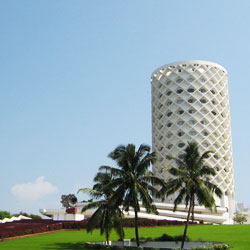
It opened in 1986 and now houses the Discovery of India exhibition, an art gallery, theatre and restaurant. Inspired by Nehru's book of the same name, it seeks to explore 5000 years of history by investigating the geographical, social, culture and political forces at play in the subcontinent. It's highly informative in a school trip kind of way. But then it's best to concentrate on just a couple of the major themes, such as the detailed exhibits depicting Nehru's life and times. Other interesting topics include the Mauryan Empire, the impact of the west and the struggle for independence. Children below five years of age not allowed into the Sky Theatre. The Nehru Planetarium is closed on Mondays. It was in 1972 that the Nehru Centre was conceived by the late Shri Rajni Patel and others as a living memorial to the maker of modern India, who symbolized the ideals of enlightened curiosity, scientific temper, secular values, a world view and above all, a faith in the people of India. The late Smt. Indira Gandhi laid the foundation stone of this magnificent dream on November 2, 1972 on a six-acre plot leased by the Government of Maharashtra.
Explore More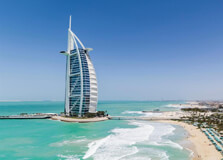
The Burj Al Arab, often referred to as "the world's only seven-star hotel," is one of Dubai's most iconic landmarks. Located on its own artificial island, the Burj Al Arab is not only a symbol of luxury but also a marvel of modern architecture and engineering. Standing at a height of 321 meters (1,050 feet), it is one of the tallest hotels in the world. The hotel's distinctive sail-shaped design makes it easily recognizable and one of the most photographed buildings in the world. How to Reach Burj Al Arab, Dubai Burj Al Arab is situated in the heart of Dubai, and there are several ways to reach this iconic landmark. By Taxi or Car: The most common way to reach Burj Al Arab is by taxi or private car. The hotel is located in the Jumeirah area, and it is easily accessible from popular locations in Dubai like Downtown Dubai or Dubai Marina. Simply tell the driver that you are going to the Burj Al Arab, and they will take you directly to the hotel’s entrance. By Public Transport: Public transportation options include the Dubai Metro. You can take the Red Line to the Mall of the Emirates Station, then transfer to a taxi for a short ride to the Burj Al Arab. Public buses also operate in the area, but they may require walking to reach the hotel. By Helicopter: For a truly luxurious experience, you can opt for a helicopter ride to the Burj Al Arab. The hotel offers a helicopter transfer service from various parts of Dubai, allowing guests to enjoy stunning aerial views of the city as they approach the hotel. Weather at Burj Al Arab, Dubai The weather in Dubai is typically hot and sunny throughout the year, making it a popular year-round destination. However, the weather can vary depending on the season: Summer (June to September): Summer in Dubai can be extremely hot, with temperatures often exceeding 40°C (104°F). Humidity levels can also be high, making the weather feel even hotter. It’s best to visit during the early morning or late evening when temperatures are more bearable. Autumn (October to November): Autumn brings more moderate temperatures ranging from 25°C to 35°C (77°F to 95°F). This is one of the best times to visit, as the weather is still warm but more comfortable than the scorching summer heat. Winter (December to February): Winter in Dubai is mild and pleasant, with temperatures ranging from 15°C to 25°C (59°F to 77°F). This is the peak tourist season, with many visitors flocking to Dubai for its comfortable climate. Spring (March to May): Spring also offers mild temperatures, typically between 20°C and 30°C (68°F to 86°F), making it another great time to visit the Burj Al Arab and explore the city. Timing of Burj Al Arab, Dubai The Burj Al Arab is a luxury hotel and not a public tourist attraction, so access to the hotel is generally limited to hotel guests and those with reservations at its restaurants or services. The general public is not allowed to enter the hotel without prior arrangements. However, you can visit the hotel for specific activities, such as dining or taking part in a special tour. Hotel Check-in Time: Guests who have made reservations at the Burj Al Arab can check in any time after 2:00 PM. Restaurant Hours: Some of the hotel’s top-tier restaurants, such as Al Mahara (the underwater restaurant) and Skyview Bar, have specific opening hours. Typically, these restaurants open for lunch from 12:30 PM and serve dinner until 10:30 PM. Why Famous for Burj Al Arab, Dubai? The Burj Al Arab is famous for being the epitome of luxury and architectural innovation. It is one of the most photographed and recognized hotels in the world due to its unique sail-shaped design and its opulent interior. The Burj Al Arab is also known for offering its guests unmatched services, from chauffeur-driven Rolls Royce cars to private helicopter transfers. Its exclusivity and high-end services make it a sought-after destination for celebrities, dignitaries, and wealthy travelers. Besides its luxurious accommodations, the Burj Al Arab is also famous for its culinary experiences. It is home to several Michelin-starred restaurants that serve exquisite international cuisines. The hotel is also well known for its lavish interior, which includes gold leaf decorations, grandiose chandeliers, and luxurious suites, some of which feature private terraces and swimming pools. Entry and Visit Details about Burj Al Arab, Dubai To visit the Burj Al Arab, you must either be a hotel guest or have a reservation at one of its exclusive restaurants. For those not staying at the hotel but still wish to visit, here are the options: Dining Experience: One of the most popular ways to experience the Burj Al Arab is by making a reservation at one of its fine dining restaurants, such as Al Mahara or Skyview Bar. These establishments provide an exclusive opportunity to explore the hotel’s opulence while enjoying world-class cuisine. Helicopter Tour: Another way to visit is by taking a helicopter tour that lands on the helipad of the Burj Al Arab, offering stunning aerial views of Dubai. Special Tours: The Burj Al Arab occasionally offers private tours to a select number of guests, where they can experience the hotel's history, architecture, and luxurious interiors. History and Architecture of Burj Al Arab The Burj Al Arab was designed by architect Tom Wright of Atkins and was completed in 1999. The hotel was built on an artificial island 280 meters offshore from the Jumeirah Beach, connected to the mainland by a private causeway. The hotel’s sail-shaped design is inspired by the dhow sailboats traditionally used in the Arabian Gulf, symbolizing the UAE’s maritime heritage. Its construction was an engineering marvel, using advanced technologies to build the structure on reclaimed land. The Burj Al Arab is supported by a large concrete platform, and it was constructed with high-quality materials, such as marble, gold leaf, and precious stones, to ensure its luxury appeal. The hotel’s interior is equally stunning, with opulent suites, extravagant chandeliers, and lavish decorations designed to reflect a sense of grandeur and extravagance. Things to Do at Burj Al Arab While the Burj Al Arab is primarily a hotel, there are still several things visitors can do if they wish to experience its luxury and grandeur: Fine Dining: Experience world-class dining at the Burj Al Arab’s famous restaurants, including the underwater Al Mahara and the Skyview Bar, which offers panoramic views of Dubai’s skyline. Afternoon Tea: For a more casual experience, consider enjoying a traditional afternoon tea at the Sahn Eddar lounge. It’s a luxurious and memorable way to spend an afternoon. Helicopter Ride: Book a helicopter ride to get an exclusive bird’s-eye view of the Burj Al Arab, the Palm Jumeirah, and the Dubai coastline. Private Events: The hotel offers exclusive spaces for events, including weddings, conferences, and VIP meetings, where you can experience the full splendor of this iconic hotel. Facts and Tips About Burj Al Arab Entry Fee: The Burj Al Arab does not have an entry fee unless you are dining or attending an event. You must make a reservation for access to the hotel’s restaurants or other services. Dress Code: For dining at Burj Al Arab’s restaurants, a smart-casual dress code is enforced, with no shorts, flip-flops, or overly casual attire allowed. Book in Advance: Due to the hotel’s popularity, it’s advisable to book your dining or helicopter tour in advance to secure a spot. Best Time to Visit: The best time to visit Burj Al Arab is during the cooler months of winter, from November to March, when the weather is mild and perfect for exploring Dubai.
Explore More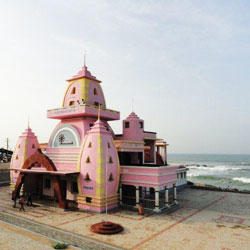
Built in memory of Gandhiji, the memorial is a good example of modern architecture. Every year on Gandhiji's birthday 2nd October, the sun's rays fall at the exact spot where the urn was displayed before immersion. It resembles an Orissan temple. Built in memory of Gandhiji, the memorial is good example of modern architecture. Here, the last remains of Gandhiji are kept for public viewing. Next to the Kumari Amman Temple, this striking memorial stored the Mahatma's ashes until they were immersed in the sea.
Explore More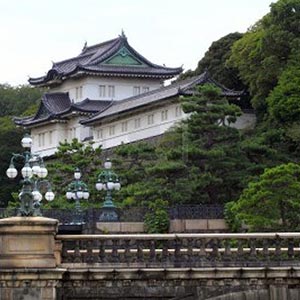
About The Tokyo Imperial Palace The Tokyo Imperial Palace, also known as the Kokyo, is the primary residence of the Emperor of Japan. Located in the Chiyoda Ward of Tokyo, the palace is set amidst beautiful gardens and surrounded by moats and stone walls. The palace is a symbol of Japan's rich history and culture and is a must-visit for anyone interested in Japanese history. Timings Of Tokyo Imperial Palace The Tokyo Imperial Palace is open to the public on certain days of the year, usually on the Emperor's Birthday (December 23) and New Year's Day (January 2). The palace is also open on special occasions and for guided tours. It is recommended to check the official website for the most up-to-date information on visiting hours. Entry Fee There is no entry fee to visit the Tokyo Imperial Palace. However, visitors are required to book a guided tour in advance through the official website or tour operators. Required Time And Restricted Items Visitors should allow at least a few hours to explore the Tokyo Imperial Palace and its surrounding gardens. It is important to note that photography is not allowed inside the palace buildings, and certain areas may be restricted to visitors. Architecture Of Tokyo Imperial Palace The Tokyo Imperial Palace features a mix of traditional Japanese architecture with modern elements. The main building, known as the Kyuden, is where the Emperor conducts official duties. The palace complex also includes beautiful bridges, gates, and gardens that reflect Japan's rich cultural heritage. Best Time To Visit The best time to visit the Tokyo Imperial Palace is during the spring when the cherry blossoms are in full bloom. The palace grounds are transformed into a stunning sea of pink and white flowers, making it a picturesque and memorable experience. How To Reach The Tokyo Imperial Palace is easily accessible by public transportation. Visitors can take the subway to Otemachi Station or Nijubashimae Station, both of which are within walking distance of the palace. Taxis and buses are also available for those who prefer other modes of transportation. History Of Tokyo Imperial Palace The Tokyo Imperial Palace has a long and storied history that dates back to the Edo period. Originally built as a castle for the Tokugawa shogunate, the palace was later designated as the residence of the Emperor of Japan after the Meiji Restoration in 1868. Inside Tokyo Imperial Palace Inside the Tokyo Imperial Palace, visitors can explore the various buildings and gardens that make up the palace complex. Highlights include the Seiden State Room, the East Gardens, and the Nijubashi Bridge, which is one of the most iconic landmarks of the palace. Traveling Tips When visiting the Tokyo Imperial Palace, it is important to wear comfortable shoes as there is a fair amount of walking involved. It is also recommended to bring sunscreen, water, and a camera to capture the beauty of the palace grounds. Hotels Near Tokyo Imperial Palace Several hotels near the Tokyo Imperial Palace offer convenient accommodation options for visitors. Some of the popular hotels in the area include The Peninsula Tokyo, Hotel New Otani Tokyo, and The Tokyo Station Hotel. Nearby Tourist Spots Of Tokyo Imperial Palace Several tourist spots near the Tokyo Imperial Palace are worth exploring. These include the Yasukuni Shrine, the National Museum of Modern Art, and the Hibiya Park. Visitors can also take a leisurely stroll along the Chidorigafuchi Moat for beautiful views of the cherry blossoms.
Explore More